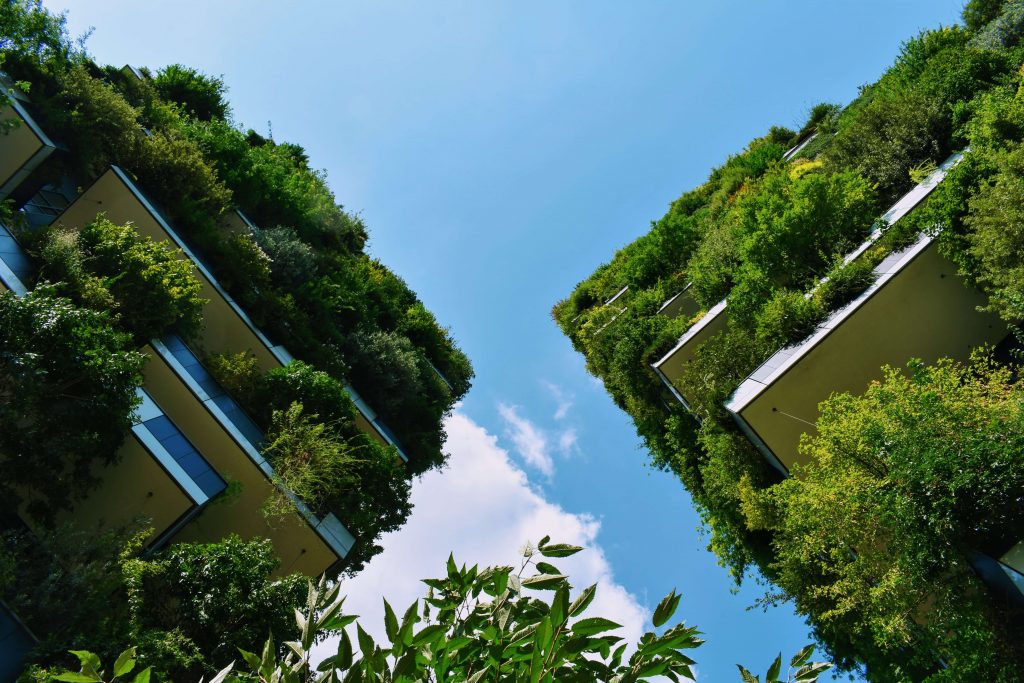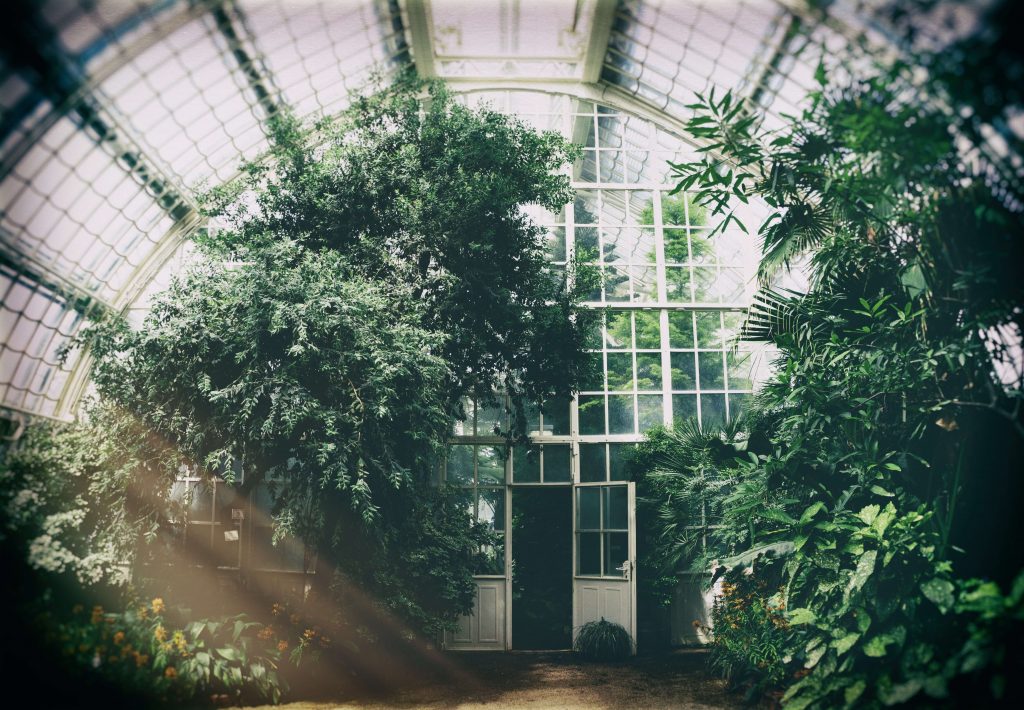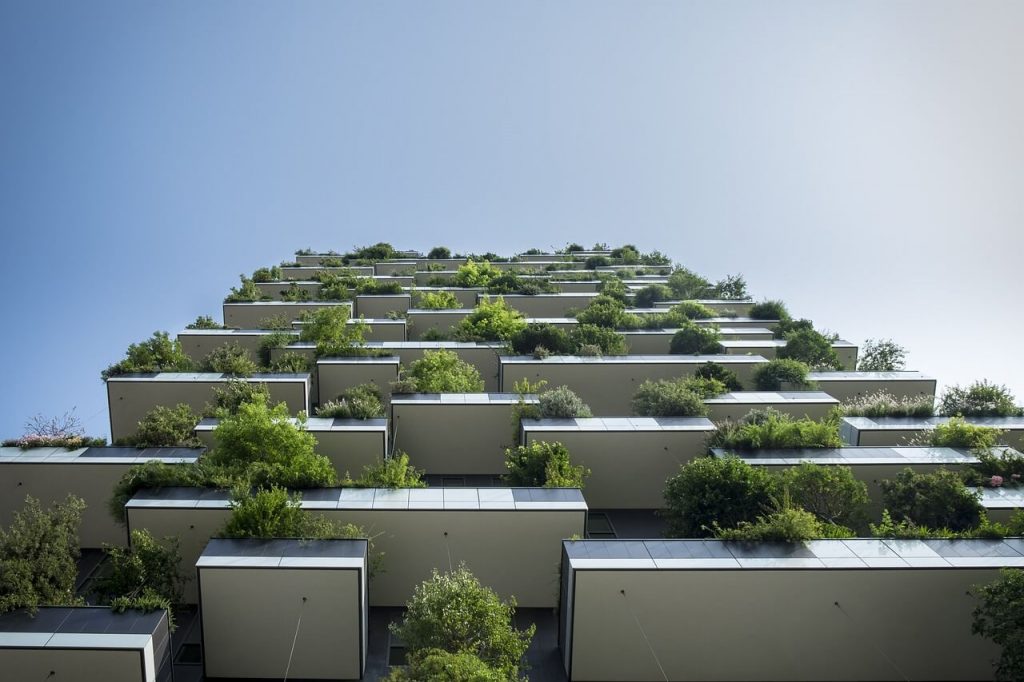Climate change has been a significant issue in the 21st century, and people and governments try to find new ways to preserve our ecosystem. Gladly, authorities are starting to invest more in green buildings.
Green buildings are eco-friendly and contain non-toxic materials obtained from natural and renewable sources handled sustainably.
To help you understand problems related to climate change and how green buildings can help, we’ve put together some of the most interesting green building statistics
So stay tuned!
Top Green Building Trends: Editor’s Choice
- The US green building market is expected to reach $103.08 million by 2023.
- 17.2% of green buildings in the US belong to the educational sector.
- LEED-certified buildings in the US consume 25% less energy and 11% less water.
- Green buildings certified by the Indian Green Building Council use 40–50% less energy and 20–30% less water.
- The global green building materials market is expected to hit $433 billion by 2024.
- By 2030, worldwide energy efficiency measures could save up to $410 billion.
- LEED-certified buildings reduce CO2 emissions by 34%.
Green Buildings in the US
1. The US green buildings market is expected to reach $103.08 billion by 2023.
In 2019, the global non-residential green buildings market reached $85.1 billion. By 2020, it has fallen to $79.05 billion at a CAGR of -7.1%.
Moreover, the market is projected to recover and grow to $103.08 billion by 2023 at a CAGR of 9.3%.
2. 17.2% of green buildings in the US belong to the educational sector.
Statistics on building green show that the US green building market’s size is $81 billion.
The commercial office sector has the biggest green building market share in the US, with a green building share of 21.2% and an income of $1.14 billion.
Moreover, the US educational green contracting market’s revenue is $759.06 million.
3. By 2030, California is projected to achieve zero net energy.
According to California green building statistics, the California Energy Efficiency Strategic Plan from 2008 established 2030 as the target date for 50% of commercial building retrofits and all new commercial constructions.
Furthermore, Executive Order B-55-18 requires California to obtain carbon neutrality by 2045 and maintain net negative emissions afterward.
4. LEED-certified buildings in the US consume 25% less energy and 11% less water.
Green facts show that green buildings can reduce or eliminate negative impacts on the environment by using less water, energy, or natural resources.
Moreover, they can have a positive impact on the environment by generating their own energy or increasing biodiversity.
With over 96,000 projects in 167 countries globally, LEED is one of the most famous green building certification programs globally.
5. Smart green building sales in the US are $4.3 billion.
In 2016, smart home sales were $1.3 billion. From that point on, they have shown steady growth. In 2018, they were $3.9 billion, and they reached $4.3 billion in 2020.
6. 57% of Americans admit that a sense of community is a social reason for going green.
According to residential green building statistics, 71% of respondents say that lower energy consumption is the main reason for going green.
Similarly, 65% of respondents admit lower operating costs are the key reason, while 35% admit lower water consumption is a significant reason for going green.

Green Buildings in the World
7. With 1.494 LEED-certified projects, China is at the top of the green movement.
According to green building project statistics, these projects are spread over 68.83 million square meters.
Right behind China is Canada, with a total of 3.254 LEED-certified projects spread over 46.81 million square meters. In third place is India, with 899 LEED-certified projects spread over 24.81 million square meters.
8. Green buildings certified by the Indian Green Building Council use 40–50% less energy and 20–30% less water.
The most recent building facts show that India has 24.81 million gross square meters of LEED-certified zone.
As a result of this, the buildings certified by the Indian Green Building Council have 20–30% lower water and 40–50% lower energy consumption.
9. In South Africa, licensed green buildings to decrease energy consumption by 30–40% yearly.
Green building facts demonstrate that green buildings in South Africa can save between 20–30% potable water and 30–40% energy and carbon emissions annually.
That said, there are more than 500 buildings with a green building license in South Africa, and the amount keeps increasing every year.
10. Australian Green-Star-certified buildings produce around 62% fewer greenhouse gas emissions.
According to green building statistics, Australia has more than 12 million square meters of registered green building space.
Green buildings with the Green Star certification in Australia emit 62% fewer greenhouse gas emissions and 51% less potable water than common Australian buildings constructed to meet minimum industry requirements.
11. The Pixel Building in Melbourne is the most sustainable building in the world.
The primary carbon-neutral service building in Australia, producing all its power and water on-site, is the Pixel Building in Melbourne.
This building has supports that help process wastewater, a range of vertical wind turbines, and a roof that catches rainwater.
Other sustainable buildings can be found globally, for example, the One Central Park in Sydney, the Bahrain World Trade Center 1 and 2, the Museum of Tomorrow in Rio de Janeiro, Brazil, and similar.
In Poland, carbon neutrality and zero energy were also the primary reasons Skanka began to apply perovskite solar cells on commercial buildings in 2018.
12. By 2024, the worldwide green building materials market is expected to hit $433 billion.
Green building industry statistics show that the global market for Green Building Materials hit $238 billion in 2020. Moreover, it is expected to reach $425.4 billion by 2027, increasing at a CAGR of 8.6%.

Fun Facts About Green Buildings
13. The first LEED Platinum-certified high-rise commercial building is One Bryant Park.
Sustainable construction statistics demonstrate that the first LEED Platinum-certified high-rise industrial building is the One Bryant Park of America tower in midtown Manhattan.
This building can recycle greywater, capture and reuse rainwater, and has its 4.6-megawatt cogeneration plant.
It also possesses an HVAC system that uses UFAD (underfloor air distribution) technology to reduce environmental impact and long-term costs.
14. Turner Corp. is the leading sustainable building company with green design revenue of $5.5 billion.
Its most famous project is The Weed Army Community Hospital in Fort Irwin, California — the U.S. Department of Defense’s only LEED Platinum, carbon-neutral, net-zero hospital.
Right behind Turner Corp. is Clark Construction with green design revenue of $4 billion, followed by AECOM with $3.8 billion revenue.
15. By 2030, worldwide energy efficiency measures could save up to $410 billion.
A new study has shown that green structures could generate 1.7–2.5 million extra jobs by 2030 as more jobs are produced in the industrial sector.
By 2030, up to 7.600 TWh of electricity would be saved—a 13% reduction in the business.
16. Well-ventilated offices register a 101% rise in cognitive numbers.
Statistics about environmental buildings show that working in well-ventilated environments increases brain function by 101%. Meanwhile, healthy indoor air quality can lead to improved performances of up to 8%.
That said, green buildings improve CO2 levels and air quality.

Green Building Trends from 2020
17. Around 97% of green builders report using energy efficiency practices on more than 61% of their projects.
Green building report shows that 97% of builders use efficiency practices on over 75% of their projects, while 61% use high-performance ventilation.
Furthermore, around 88% of them mention using a substantial building envelope.
18. LEED-certified buildings reduce CO2 emissions by 34%.
Each year, standard building systems spend millions of tons of materials, while green building uses significantly fewer resources.
Green trends show that LEED-certified projects are responsible for engaging over 80 million tons of waste from landfills. By the end of 2030, that number is supposed to grow up to 540 million tons.
19. Almost 30 million households in the US are projected to add smart home technology.
Green building research in the US shows that almost 30 million families are predicted to add smart home technology soon.
Interestingly, a high-demand product that consumers are looking for is a connected camera. Other products customers want in their homes include video doorbells, smart locks, and connected light bulbs.
Key Takeaways
A green building is a structure that reduces a human negative effect and can have a positive impact on our environment. If we want a greener and healthier future, we all must contribute to protecting our climate.
Moreover, while there are many other and perhaps more effective ways to achieve a greener future, the aforementioned green building statistics outline the significance of green buildings, which can significantly help create a better future for all of us.
Frequently Asked Questions
A sustainable green building can be any construction — an office, school, home, or any other type of structure — that implements specific characteristics like excellent indoor air quality, non-toxic and sustainable materials, effective use of water, energy, and solar energy.
By using less water, energy, or natural resources, green buildings can have a positive impact on the environment by generating energy or increasing biodiversity.
Green buildings are created to be healthier, have pleasant working conditions, and reduce energy and water waste without reducing comfort.
At the same time, green constructions gained thermal comfort and sufficient ventilation, and increased light quality by including more natural daylight. Green buildings increase workers’ and machines’ productivity and reduce operating costs by 25–30%.
The common belief is that green buildings cost more and aren’t the best way to approach affordable housing schemes. However, builders claim that the construction costs of green buildings are approximately 5% higher than traditional homes.
Still, the difference is compensated in the first 3–4 years, together with a significant reduction in operational costs — between 25 and 40%.
A ‘green’ building has design, construction, or operation that reduces or completely eliminates negative impacts on our climate and natural environment. Moreover, it provides efficient use of energy, water, and other resources and allows the use of renewable energy, like solar energy.
However, there is not enough data to prove that green buildings save more energy than conventional ones. The best-case scenario is that these green buildings perform no better or worse on primary energy savings.
The Phipps’ Center For Sustainable Landscapes in Pittsburgh is a green building that handles solar, wind, and geothermal energy. Another example of a green building is The Bahrain World Trade Center (BWTC) in Manama, Bahrain that was built in 2008. It is a 50-floor, twin tower complex — the first-ever skyscraper in the world to include wind turbines in its design.
Other examples of famous green buildings are Khoo Teck Puat Hospital in Singapore, Pixel Building in Melbourne, The Crystal in London, and ACROS Fukuoka Foundation Building in Japan.
First, using sustainable materials helps with saving money on electricity and water bills. Green building statistics show that companies paying 2% more for green elements than traditional building materials will reimburse these costs in 3–4 years.
Second, federal and local governments give tax credits and additional financial benefits for green buildings. Finally, sustainable building materials save money usually spent on maintenance and repair.
